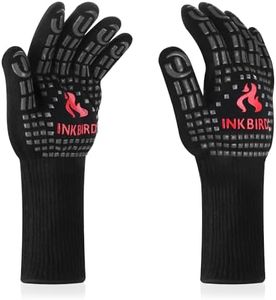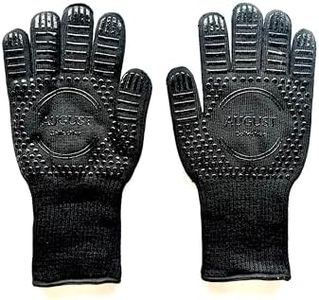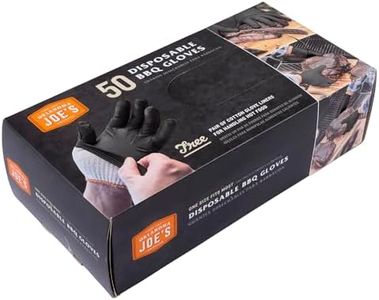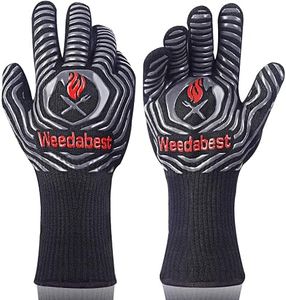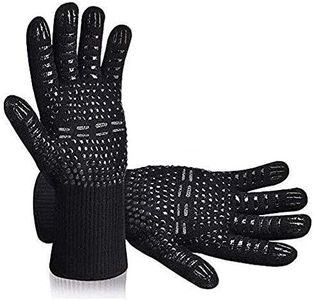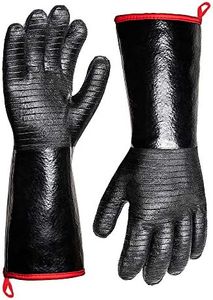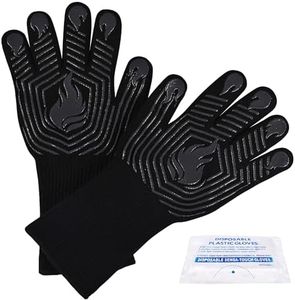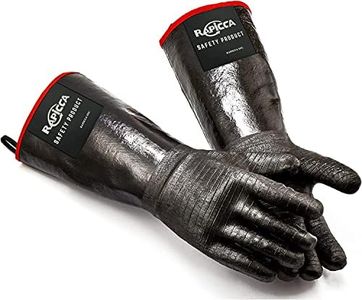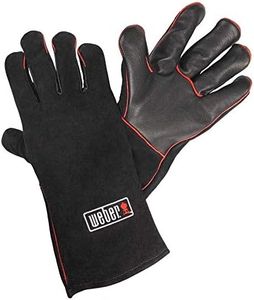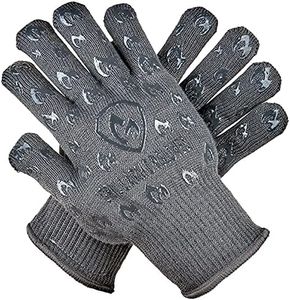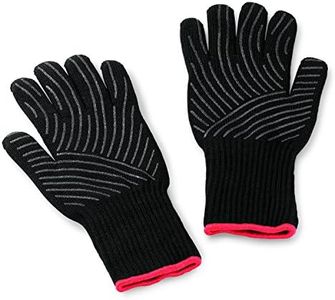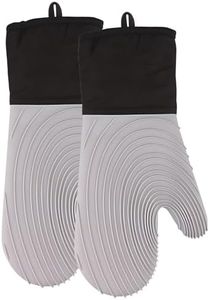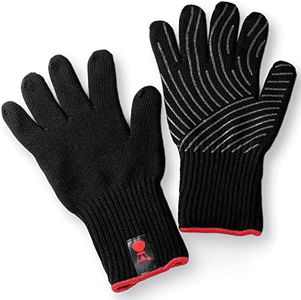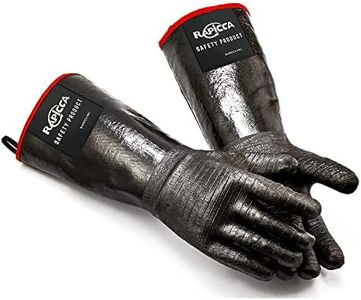We Use CookiesWe use cookies to enhance the security, performance,
functionality and for analytical and promotional activities. By continuing to browse this site you
are agreeing to our privacy policy
10 Best Grilling Gloves
From leading brands and best sellers available on the web.By clicking on a link to a third party's website, log data is shared with that third party.
Buying Guide for the Best Grilling Gloves
When you're choosing grilling gloves, it's important to balance safety, comfort, and practicality. The right pair can protect your hands from heat and flames, while also giving you enough flexibility and grip to handle food, tools, or even logs for a campfire. Before buying, think about how and where you'll use your gloves—backyard BBQ, smoker, oven, or open fire—since different activities may require different features.Heat ResistanceHeat resistance refers to the maximum temperature the gloves can withstand without getting damaged or allowing heat to reach your skin. This is one of the most important specs for grilling gloves. Heat resistance typically ranges from about 400°F on the lower end to over 900°F on the higher end. For light grilling or handling hot trays, lower heat resistance can suffice. However, if you often work directly over open flames or handle hot coals, you'll want gloves certified for high temperatures. Choose a level that matches your usual cooking style—for instance, high heat resistance for frequent BBQ or fire pit use, and moderate for occasional oven work.
MaterialThe material of the gloves determines their heat resistance, flexibility, comfort, and durability. Common materials include silicone, leather, aramid fiber (like Kevlar), and cotton. Silicone is waterproof and good for handling greasy or wet items, but may be less flexible. Leather offers excellent heat resistance and durability, popular for traditional BBQ, but can be bulky. Aramid fiber gloves provide a balance of high heat resistance and flexibility, ideal for precise tasks. Cotton gloves are comfortable but generally offer the least heat protection. Think about what feels best on your hands and consider if you'll be handling greasy, wet, or very hot items when deciding.
Grip and DexterityGrip and dexterity refer to how well you can hold and move objects while wearing the gloves. Some gloves have textured surfaces or silicone stripes for extra grip, while others focus on flexibility for finer work. Heavily padded or thick gloves protect better but might make detailed tasks, like flipping small foods or changing grill grates, more difficult. If you need to handle small grill tools or food directly, go for gloves with more dexterity. For moving heavy, hot items, a secure grip and extra padding are more important.
Length and CoverageLength and coverage describe how much of your arm the glove protects. Longer gloves protect your wrists and even part of your forearm from heat, sparks, and splatters. Common lengths range from short wrist-coverage gloves to extra-long styles that extend well past the wrist. If you often reach over large grills or into smokers, longer gloves provide better protection. For basic tasks like flipping burgers, shorter gloves might be more comfortable and easier to handle.
Ease of CleaningEase of cleaning refers to how simple it is to wash and maintain your gloves after handling greasy or messy foods. Silicone gloves are usually dishwasher safe and easy to rinse, while fabric and leather may require hand cleaning or special care. If you expect to get your gloves messy often, look for options that are machine washable or easy to wipe clean. Choose the cleaning method that fits your lifestyle.
Fit and ComfortFit and comfort relate to how well the gloves conform to your hands and how pleasant they feel to wear during long cooking sessions. A snug fit gives better control and safety, while too-tight or too-loose gloves can be cumbersome or unsafe. Some gloves are one size fits most, while others come in multiple sizes. Think about the size and shape of your hands and whether you'll be wearing the gloves for quick tasks or extended cooking. Choose gloves that feel secure, with enough room to move your fingers freely.
